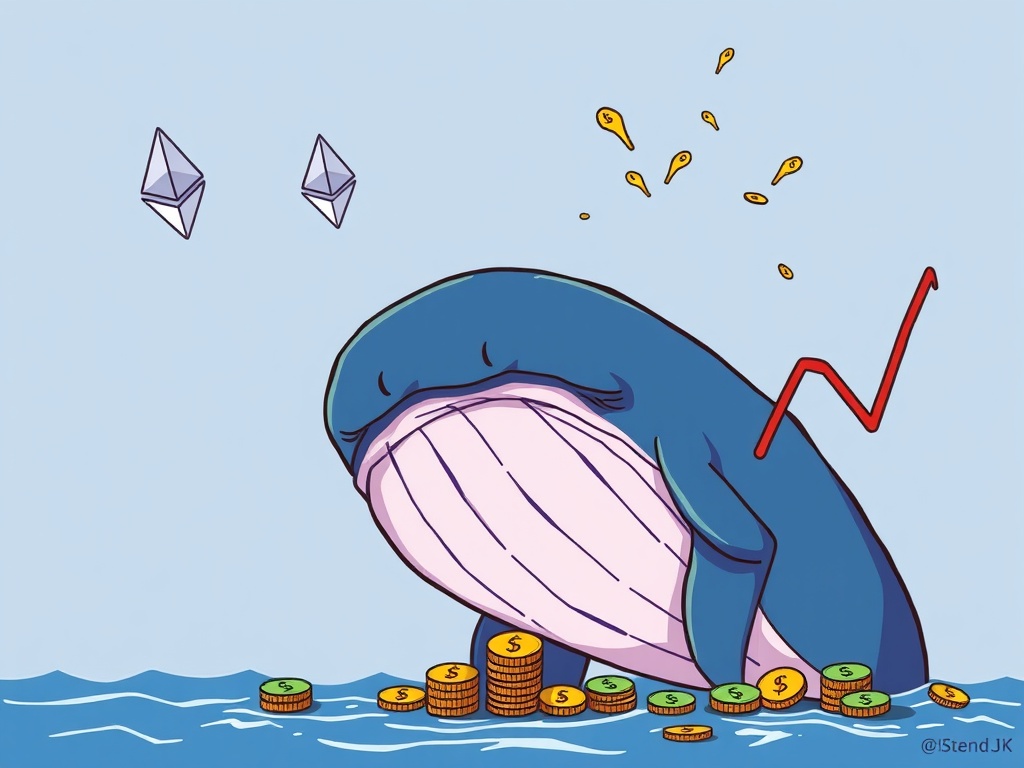BitcoinWorld

Crypto Whale’s Shocking $3 Million Loss After $29 Million Ethereum Trading Gains Vanish
The cryptocurrency world often highlights incredible gains, but a recent event involving a prominent crypto whale serves as a stark reminder of the inherent risks. This story unfolds a dramatic reversal of fortune, where an initial $3 million investment, which ballooned into $29 million, was completely wiped out. This significant loss, primarily due to aggressive Ethereum trading strategies, underscores the volatile nature of the digital asset market.
Understanding Crypto Whale Trading Tactics
For six months, a trader known as @qwatio on X (formerly Twitter) demonstrated remarkable skill. They transformed an initial capital of $3 million into an astounding $29 million. This incredible growth captivated many observers within the crypto community, showcasing the potential for substantial returns in strategic crypto investments.
However, the narrative took a sharp turn. Instead of securing profits, the trader began taking repeated short positions on Ethereum (ETH). Shorting involves betting on a price decline, and while it can be profitable in a bear market, it carries immense risk, especially when leveraged.
The Perils of High-Risk Trading and Ethereum Volatility
The decision to short Ethereum repeatedly proved to be a critical misstep. Despite initial successes, the market often moves unpredictably, and even experienced traders can face unexpected reversals. The consistent shorting against ETH’s price movements eventually led to mounting losses, eroding the substantial gains previously accumulated.
- Overconfidence: A common pitfall after a string of successes.
- Market Reversals: Even strong trends can reverse sharply, catching leveraged positions off guard.
- Leverage Risk: Using borrowed funds amplifies both gains and losses.
The final blow came with a $475,000 liquidation on the decentralized derivatives protocol GMX. This GMX liquidation event marked the complete loss of not only the $29 million in gains but also the original $3 million principal. This scenario vividly illustrates the dangers associated with high-risk trading and over-leveraged positions in volatile assets like Ethereum.
Actionable Insights from On-Chain Analysis
On-chain analyst @EmberCN diligently tracked and reported this saga on X. Their detailed on-chain analysis provided transparent insights into the trader’s activities, from their initial successful ventures to their ultimate downfall. This highlights the power of blockchain data in providing real-time, immutable records of transactions and trading positions.
What can we learn from this unfortunate episode? It emphasizes the paramount importance of robust risk management. Even with a significant capital base and a proven track record, the crypto market demands caution. Diversification, setting stop-loss orders, and avoiding excessive leverage are fundamental principles that can protect capital.
This event serves as a powerful cautionary tale for anyone involved in Ethereum trading or other high-stakes crypto ventures. While the allure of massive profits is strong, the potential for equally massive losses is always present. Understanding market dynamics and respecting volatility are crucial for long-term survival in this exciting yet challenging space.
Key Takeaways for Crypto Traders:
- Manage Your Risk: Never invest more than you can afford to lose.
- Avoid Over-Leverage: Leverage amplifies both wins and losses; use it sparingly.
- Diversify Your Portfolio: Don’t put all your eggs in one basket, even if it’s Ethereum.
- Stay Informed: Use on-chain analysis and reliable sources to understand market sentiment.
The story of this crypto whale is a sobering reminder that even those with deep pockets and impressive winning streaks can fall victim to the market’s unforgiving nature. It reinforces the need for discipline and strategic thinking over impulsive, high-stakes bets.
Frequently Asked Questions (FAQs)
What is a crypto whale?
A crypto whale is an individual or entity that holds a very large amount of cryptocurrency, enough to potentially influence market prices with their trades. Their movements are often tracked by analysts.
What does it mean to short Ethereum (ETH)?
Shorting Ethereum means you are betting that its price will fall. Traders borrow ETH, sell it, and hope to buy it back later at a lower price to return it, profiting from the difference.
What is GMX and how does liquidation occur on it?
GMX is a decentralized perpetual exchange that allows users to trade cryptocurrencies with leverage. A liquidation occurs when a trader’s margin balance falls below the required maintenance margin, leading to their position being automatically closed to prevent further losses.
How can on-chain analysis help traders?
On-chain analysis involves examining data directly from the blockchain, such as transaction volumes, whale movements, and exchange flows. This data can provide insights into market sentiment, potential price movements, and overall network health.
What are the key lessons from this crypto whale’s loss?
The main lessons include the critical importance of risk management, avoiding excessive leverage, not becoming overconfident after gains, and understanding the extreme volatility inherent in cryptocurrency markets.
Share Your Insights!
Did this cautionary tale resonate with you? Share this article on your social media channels to help others understand the vital importance of risk management in crypto trading. Your insights can contribute to a more informed and cautious trading community!
To learn more about the latest crypto market trends, explore our article on key developments shaping Ethereum price action.
This post Crypto Whale’s Shocking $3 Million Loss After $29 Million Ethereum Trading Gains Vanish first appeared on BitcoinWorld and is written by Editorial Team





